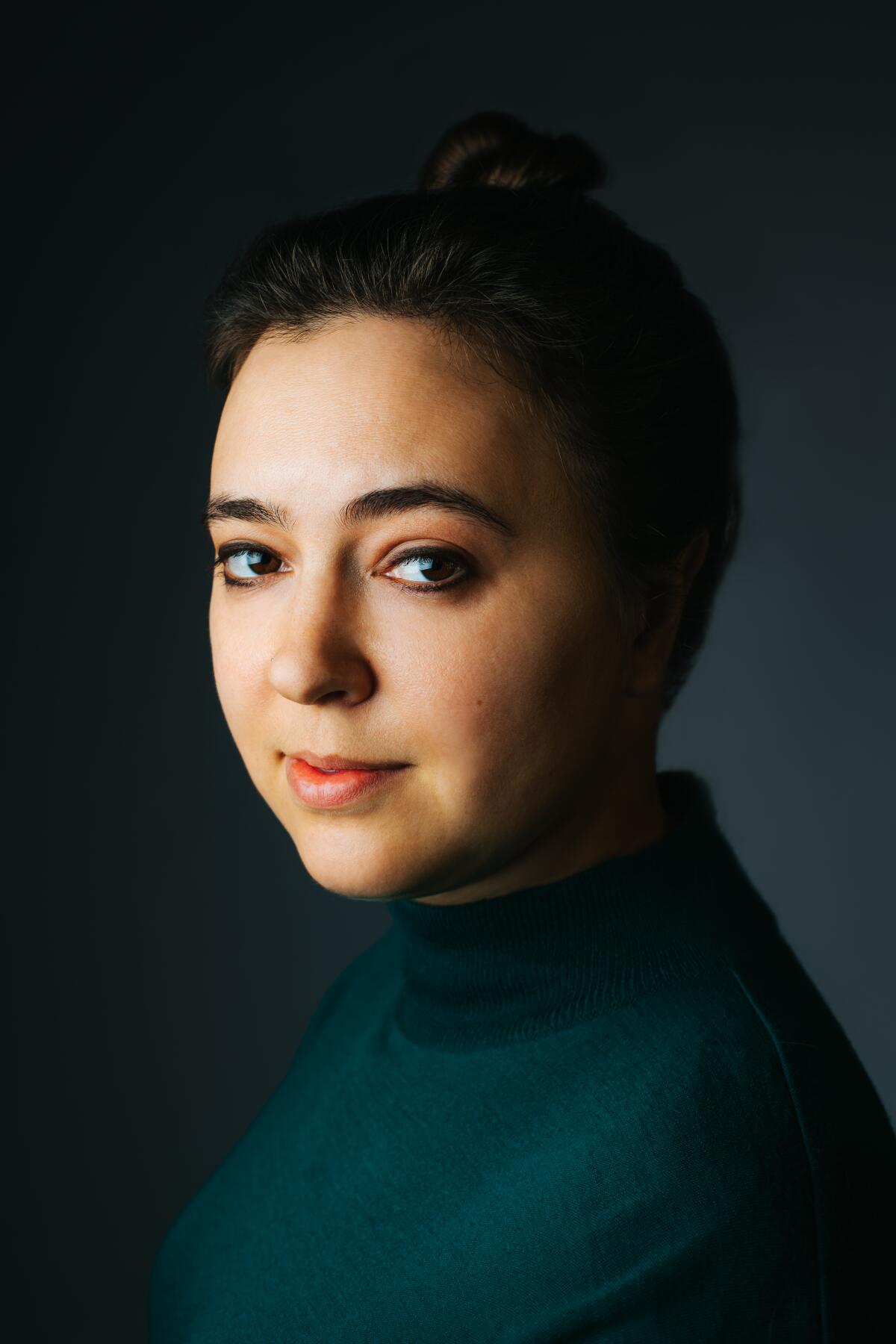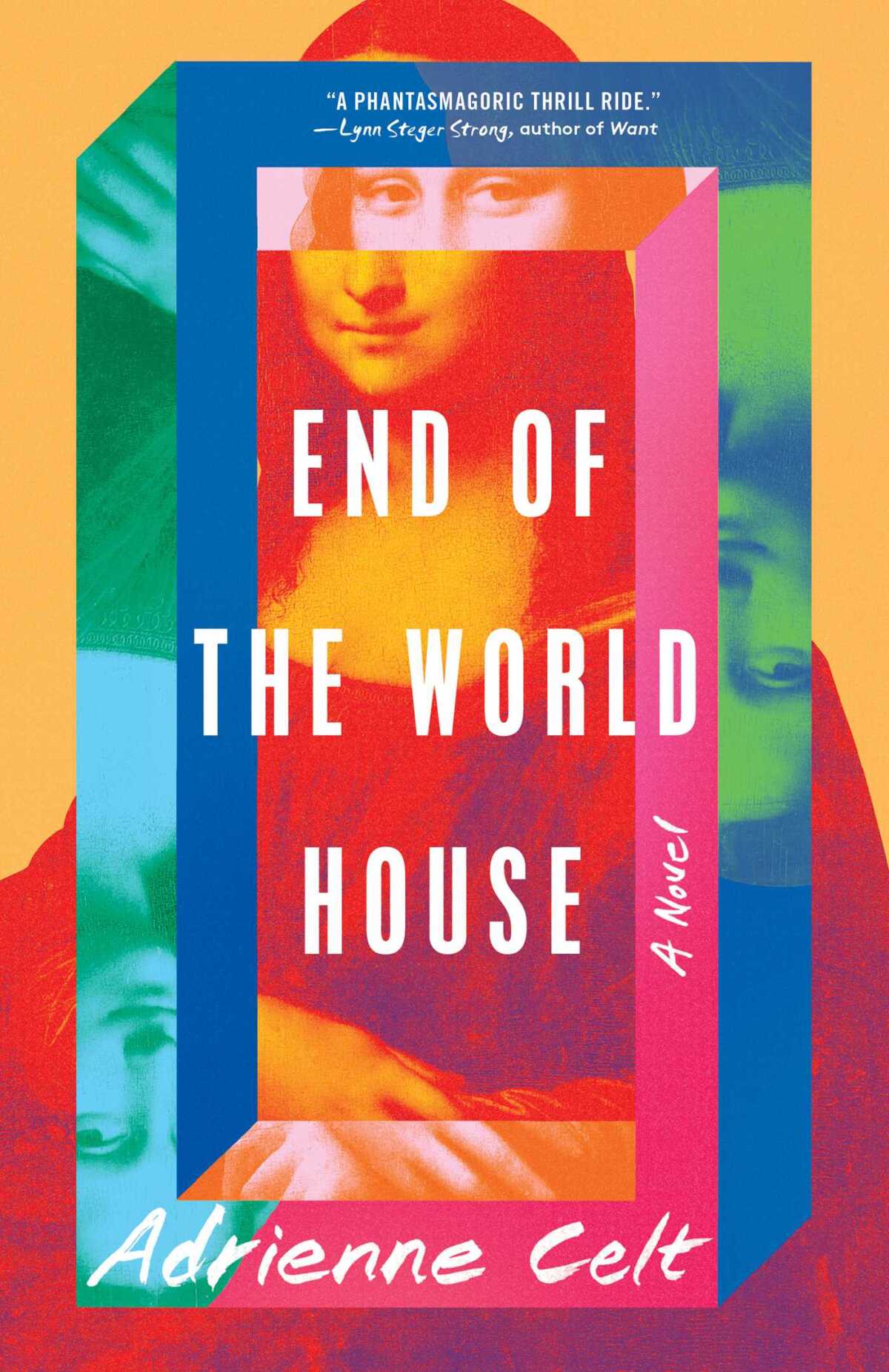Review: A novel reboots the ‘Groundhog Day’ time-loop genre — but it’s no broken record

- Share via
On the Shelf
End of the World House
By Adrienne Celt
Simon & Schuster: 320 pages, $28
If you buy books linked on our site, The Times may earn a commission from Bookshop.org, whose fees support independent bookstores.
Harold Ramis’ 1993 comedy “Groundhog Day” didn’t invent the time-loop narrative, but it established the popular template for such stories: The cause is never identified; the protagonist must make different choices (usually to become a better person) to stop the loop; there is almost always a period in which the characters exploit their position to their advantage; frequently, there’s a love story. Although these parameters are rarely broken, any story taking on the “Groundhog Day” concept should add something to the formula. The most successful versions pair the concept with something fresh, as in the sci-fi action film “Edge of Tomorrow” or the horror flick “Happy Death Day.” One popular additive in recent iterations such as Netflix’s “Russian Doll” and Hulu’s “Palm Springs” is the inclusion of a second victim.
Adrienne Celt’s new novel, “End of the World House,” could be elevator-pitched as “Groundhog Day” at the apocalypse. A combination of climate disaster and unspecified terrorism ravages the world while best friends Bertie and Kate navigate their professional lives in San Francisco. Bertie is a cartoonist for a tech company whose grand ambitions she knows very little about. (“No one was content to do one thing well anymore. They all wanted to do everything.”) Kate fundraises for “a nonprofit that lobbied to improve the quality of school lunches.”
“Russian Doll,” which begins streaming in its eight-episode entirety Friday on Netflix, is a beautiful puzzle piece, a circular, multiplane, existential mystery-comedy set in the villages of Lower Manhattan.
They’ve been close since high school, but Kate’s impending move to Los Angeles for a new job has caused a rift, so Bertie plans a trip for the two of them to Paris. A mysterious man invites them on an after-hours private tour of the Louvre. During the eerie experience of wandering the hallowed halls of the most famous art museum in the world, Bertie and Kate get separated when Kate runs off with Javier, the man who invited them. Annoyed and unable to find her friend, Bertie returns to their hotel. The next morning she wakes up, and it’s the same day.
In addition to the apocalyptic backdrop, Celt adds a few new wrinkles to the time-loop plot. At first, neither Bertie nor Kate has any recollection of the previous day when awakening the next morning. Instead, their circumstances slowly dawn on them. Secondly, although the day repeats, certain aspects of one’s life can be retroactively shifted — so that, for example, Bertie can discover that she’s touring the Louvre not with her best friend but, rather, her boyfriend, Dylan, with whom she now suddenly shares a year of memories.

Dylan is also stuck in a loop, but he’s been in his for much longer and has figured out ways to manipulate it. He noticed Kate and Bertie outside the museum and decided to insert himself. It’s a bit confusing but here’s how Dylan explains it to Bertie: “The memories you have, they don’t just come from what you do in the loop itself. They come from the world in which that loop is possible. We wouldn’t be here, together, in Paris, if we didn’t have a life together. So we did.”
The trouble with Dylan’s intrusion into Bertie’s life is that, for whatever reason, his appearance signals Kate’s disappearance. Once Bertie realizes the truth, all she wants is to find Kate, who presumably continues to live through her own loop. Dylan agrees to help, since he has experience in this world, but only if Bertie spends a year with him — not a year inside the loop but in the period before the loop. It’s unclear whether this means actually going back in time or simply reliving implanted memories. Maybe there isn’t much difference.
A fine piece of the late author’s novel “The Pale King” is republished. But “Something to Do With Paying Attention” doesn’t touch DFW’s greatness.
The novel aims to examine the nuances of Bertie’s complex friendship with Kate, spending a good number of pages on their past together. But since the narration hews close to Bertie’s point of view, the reader doesn’t get Kate’s side of the story. This functions better in some places than others. It works for Bertie’s arc, since she must confront the fact that her best friend wants distance. Less effective is Kate’s part of the story because we know so little about her inner self — and because it adds another confusing logistical aspect to the time-loop plot. (Trust me, there isn’t nearly enough space in this review to parse it.)
Stories with fantastical conceits at their center must decide how much time to spend on their characters figuring out what’s happening. This decision becomes particularly important when the premise functions as a metaphor, as time-loop narratives almost inevitably do. They’re stories about the endless repetition of life, or the arrested development of the protagonist, or the unceasing quest for self-betterment.
The metaphor in “End of the World House” pertains to adult friendships between two women: How, for example, a yearlong romance can be so consuming it’s as if your friends have disappeared from your life. Celt is a smart, convincing novelist, and her ambitious tweaks of the concept are fascinating and fun to grapple with. But the novel works best when it foregrounds the dynamic between Kate and Bertie as they navigate the loss of a friendship, the kind of pain that can feel like the end of the world.
A guide to the literary geography of Los Angeles: A comprehensive bookstore map, writers’ meetups, place histories, an author survey, essays and more.
Adrienne Celt will appear on a panel, “The Intersection of Art and Story,” at the Los Angeles Times Festival of Books on Sunday at 3:30 p.m.
Clark is the author of “An Oasis of Horror in a Desert of Boredom” and the forthcoming “Skateboard.”
More to Read
Sign up for our Book Club newsletter
Get the latest news, events and more from the Los Angeles Times Book Club, and help us get L.A. reading and talking.
You may occasionally receive promotional content from the Los Angeles Times.








